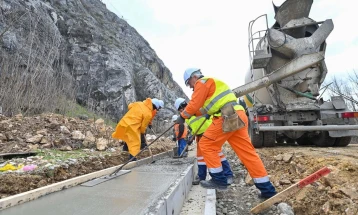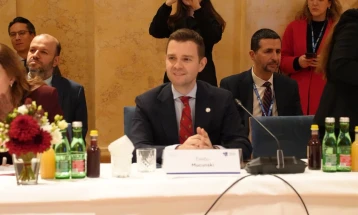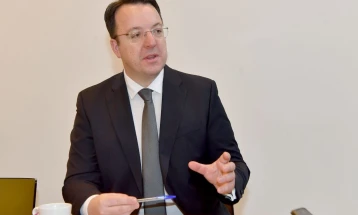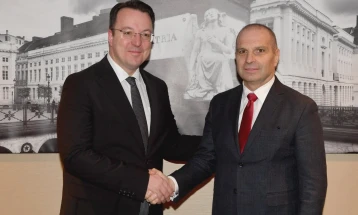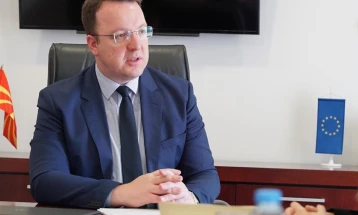Dimitrieska Kochoska: First investment cycle from UK loan will amount to EUR 2.2 billion, over five years
- Minister of Finance Gordana Dimitrieska Kochoska said railway infrastructure and healthcare investments, amounting to around EUR 2.2 billion, are two sure projects from the EUR 6 billion financial framework with the United Kingdom.
- Post By Nevenka Nikolik
- 21:54, 19 May, 2025

Skopje, 19 May 2025 (MIA) - Minister of Finance Gordana Dimitrieska Kochoska said railway infrastructure and healthcare investments, amounting to around EUR 2.2 billion, are two sure projects from the EUR 6 billion financial framework with the United Kingdom.
In an interview with 360 Degrees, she said the Government is being very careful in that regard.
"The first cycle is somewhere around five years, i.e. two billion in five years is EUR 400 million. That is the annual increase in public debt in relation to these investments, which, on the other hand, will contribute to economic growth because, let's say, in the implementation of the railway infrastructure, more Macedonian companies will be activated, etc. So, the added value will be greater," the Minister said.
Asked why the hospitals in Shtip and Kichevo are now being mentioned again with new sources of funding when they are already part of this year's budget, the Minister said that this very question is a partial answer to the claim that the public debt will not grow as others calculate it.
"We have included it in the budget because we had foreseen that we would talk to other international financial institutions that would support these investments. At the moment, these negotiations with the British Government took place, we presented them as a package and an opportunity to use the funds from there and invest in these two hospitals that are already in the budget. Now, we must point out one more thing. The increase in debt will be phased. Each year, as much as we draw from those funds, we will accordingly increase the debt. The repayment of the loans will be after a certain period. At this point, I do not want to give the most precise answer because we are still in negotiations. We are waiting for the memorandum of cooperation to be signed first, to see how things will proceed. Let's say that it is about project financing. Finally, as a country, let's start behaving like every European country behaves. You have a concrete project. Here, the people who used loans, the bankers can understand me very well, we have an investment for which we know what the implementation period is. During that period, we do not repay anything. That's the grace period we're talking about. Then, there will be a repayment period. The feasibility study will show what the repayment period will be," said Minister Dimitrieska Kochoska.
The selection of UK companies that will construct the Tabanovce-Gevgelija high-speed railway and several hospitals, she said, will be made based on the Law on Public Procurement, which has clear provisions on what happens in such “government-to-government” agreements. This, she added, means that there will not be just one, but multiple bids.
The Finance Minister claims that the agreements will be public.
There will be no advance payment, she points out. The first invoice should come in 2027. She notes that this is different from issuing a Eurobond.
"Issuing a Eurobond does not mean project financing. When we have huge projects that will mean added value for future generations, you have to share that cost with future generations. You cannot bear the entire burden. That is the situation with Corridor 8 and 10d. In 2023, there is the largest transfer of Mden 14.5 billion to Bechtel and Enka, i.e. EUR 230 million. In the same year, a Eurobond was issued with which this part was financed with 7 percent interest. Is that okay? We say we are going with project financing, which will be cheaper than these 7 percent, which will allow us to invest first in the years, not to pay and not to make repayments," said Dimitrieska Kochoska.
As regards impact on public debt, she said when investments are made, GDP growth takes place.
Photo: print screen

